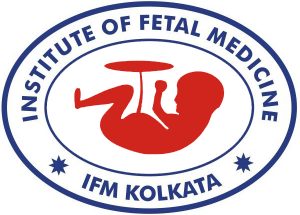Fetal Growth Restriction (FGR), also known as Intrauterine Growth Restriction (IUGR), is a condition where a fetus does not grow at the expected rate during pregnancy. This can lead to a range of complications and requires careful monitoring and management. This article provides a detailed overview of FGR, its causes, diagnosis, and management, with a focus on the specialized care available in Kolkata.
What is Fetal Growth Restriction (FGR)?
Fetal Growth Restriction refers to a condition where the fetus does not reach its growth potential in utero. This is typically diagnosed when the fetus is smaller than expected for its gestational age, which is often identified through prenatal ultrasounds.
Causes of Fetal Growth Restriction
FGR can be caused by a variety of factors, which can be broadly categorized into maternal, placental, and fetal causes:
1. Maternal Causes
- Hypertension and Preeclampsia: High blood pressure and related conditions can impair blood flow to the placenta, restricting nutrient and oxygen supply to the fetus.
- Diabetes: Uncontrolled diabetes can lead to vascular problems that affect placental function.
- Nutritional Deficiencies: Poor maternal nutrition can limit fetal growth and development.
- Substance Abuse: Smoking, alcohol consumption, and drug use can significantly impact fetal growth.
2. Placental Causes
- Placental Insufficiency: When the placenta is not functioning properly, it cannot provide adequate nutrients and oxygen to the fetus.
- Placental Abruption: The premature separation of the placenta from the uterine wall can restrict blood flow to the fetus.
3. Fetal Causes
- Genetic Conditions: Chromosomal abnormalities or genetic disorders can lead to poor fetal growth.
- Infections: Infections such as cytomegalovirus or toxoplasmosis can impair fetal development.
- Structural Abnormalities: Congenital anomalies affecting the fetus’s organs or systems can restrict growth.
Diagnosing Fetal Growth Restriction
FGR is typically diagnosed using a combination of methods:
1. Ultrasound
- Growth Measurements: Regular ultrasounds measure fetal parameters such as biparietal diameter (BPD), abdominal circumference (AC), and femur length (FL). Abnormal growth patterns, such as a smaller abdominal circumference compared to the head size, can indicate FGR.
- Doppler Studies: Doppler ultrasound assesses blood flow in the umbilical artery and other vessels. Abnormal flow patterns can suggest placental insufficiency or other issues.
2. Clinical Assessment
- Fundal Height Measurement: Measuring the height of the uterus can help estimate fetal growth and detect potential restrictions.
- Maternal Health Evaluation: Assessing the mother’s health and conditions can provide clues to the underlying causes of FGR.
Stages of Fetal Growth Restriction
FGR is often classified into stages based on severity:
- Stage 1 FGR: Mild growth restriction with minimal signs of fetal distress. The fetus may still show normal Doppler flow patterns and normal amniotic fluid levels.
- Stage 2 FGR: Moderate growth restriction with abnormal Doppler studies indicating compromised blood flow. The fetus may have decreased amniotic fluid and show signs of distress.
- Stage 3 FGR: Severe growth restriction with significant abnormalities in Doppler studies, reduced amniotic fluid, and signs of fetal distress. Immediate intervention may be required.
Management and Treatment
Managing FGR involves monitoring and addressing the underlying causes to improve fetal outcomes. Key aspects include:
1. Regular Monitoring
- Frequent Ultrasounds: Regular ultrasounds to track fetal growth, amniotic fluid levels, and Doppler flow studies.
- Non-Stress Tests (NST): Monitoring fetal heart rate and movements to assess fetal well-being.
2. Maternal Care
- Managing Underlying Conditions: Treating maternal conditions such as hypertension or diabetes to improve placental function.
- Nutritional Support: Ensuring the mother receives adequate nutrition to support fetal growth.
3. Delivery Planning
- Timing of Delivery: The timing of delivery depends on the severity of FGR and the fetus’s condition. Early delivery may be necessary in severe cases to prevent further complications.
Survival Rate and Prognosis
The survival rate for fetuses with FGR varies depending on the severity of the condition and the effectiveness of management. Mild cases with proper monitoring and care often have good outcomes, while severe cases may face higher risks of complications. With advanced medical care and early intervention, many babies with FGR can be delivered safely and go on to have normal development.
Specialized Care in Kolkata
For families in Kolkata facing a diagnosis of FGR, the Institute of Fetal Medicine (IFM) offers comprehensive care and expertise:
- Advanced Diagnostic Tools: IFM provides state-of-the-art fetal growth assessments and Doppler studies to accurately diagnose and monitor FGR.
- Expert Care: As the best fetal medicine clinic in Kolkata, IFM’s team of fetal medicine specialists and experts offers individualized care plans tailored to each case.
- Multidisciplinary Approach: Collaboration with other specialists to address underlying conditions and ensure optimal outcomes for both mother and baby.
Final Thoughts
Fetal Growth Restriction is a serious condition that requires careful monitoring and management to ensure the best possible outcomes. By understanding the causes, diagnosis, and management strategies, expectant parents can work closely with their healthcare providers to navigate the complexities of FGR. With specialized care available at institutions like the Institute of Fetal Medicine Kolkata, families can access the expertise and support needed to manage this challenging condition effectively.

